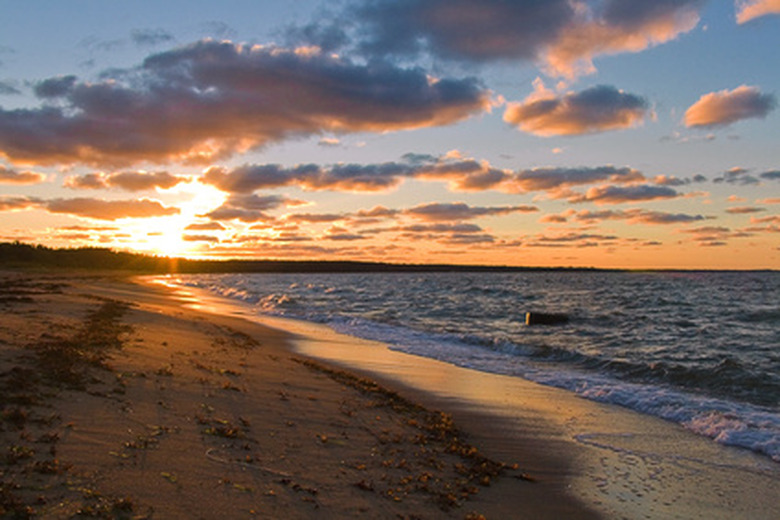How Do I Measure Ocean Wave Energy?
Ocean waves have a powerful influence on both marine life and the planet's climate. The wind forms waves that travel easily across the surface of water, changing speed, frequency and depth depending on the wind force. This creates energy.
Waves And Wind
Waves And Wind
Without the formation of waves the wind could not move water so effortlessly. Waves permit a transfer of energy from wind to water that moves water particles. These water particles do not move, but their energy does. A wave traveling at speed over a long distance, oscillates slowly. This reduces friction and conserves the wave's energy.
Measuring Wave Energy
Measuring Wave Energy
Waves store or disperse energy. A wave's energy is proportional to the square of its height. This is called its "potential." For example, a 3-meter-high wave has nine times more potential than a 1-meter-high wave. According to Seafriends, gentle, 1-meter-high waves disperse 10kW of energy per meter of beach. Wave height is measured from the wave's trough to its crest. The trough is the bottom of the front of the wave, and the crest is the unbroken top of the wave.
Wave Height Measurement
Wave Height Measurement
Three factors affect wave height: wind speed, the length of time the wind blows, and the distance that the wind blows for without changing direction. This is called the "fetch." When all three increase, higher waves result, and so does the wave energy. Waves do not grow indefinitely and when a certain point is reached the waves break, dispersing energy. This is called "fully developed" sea state.
Cite This Article
MLA
McKenzie, Eleanor. "How Do I Measure Ocean Wave Energy?" sciencing.com, https://www.sciencing.com/facts-7495930-do-measure-ocean-wave-energy/. 9 January 2018.
APA
McKenzie, Eleanor. (2018, January 9). How Do I Measure Ocean Wave Energy?. sciencing.com. Retrieved from https://www.sciencing.com/facts-7495930-do-measure-ocean-wave-energy/
Chicago
McKenzie, Eleanor. How Do I Measure Ocean Wave Energy? last modified March 24, 2022. https://www.sciencing.com/facts-7495930-do-measure-ocean-wave-energy/
